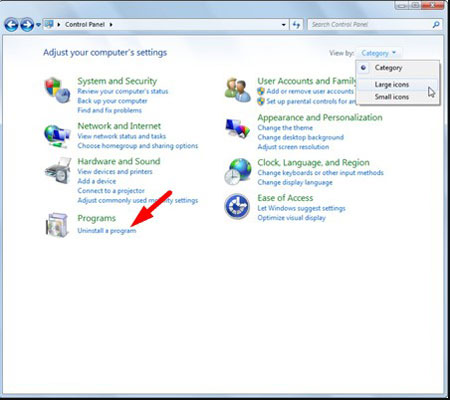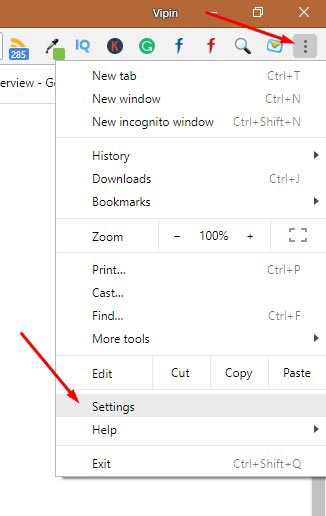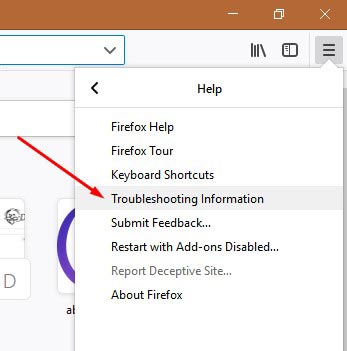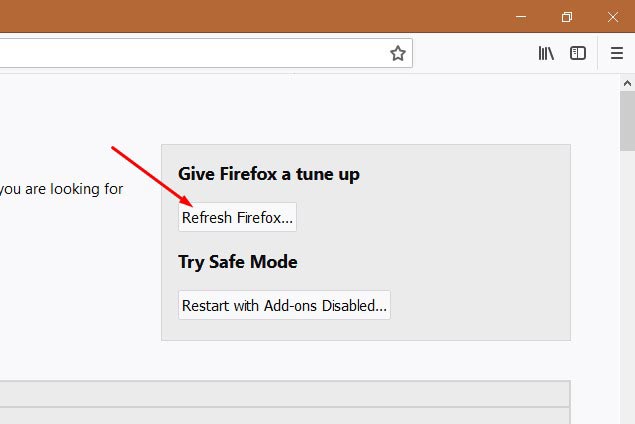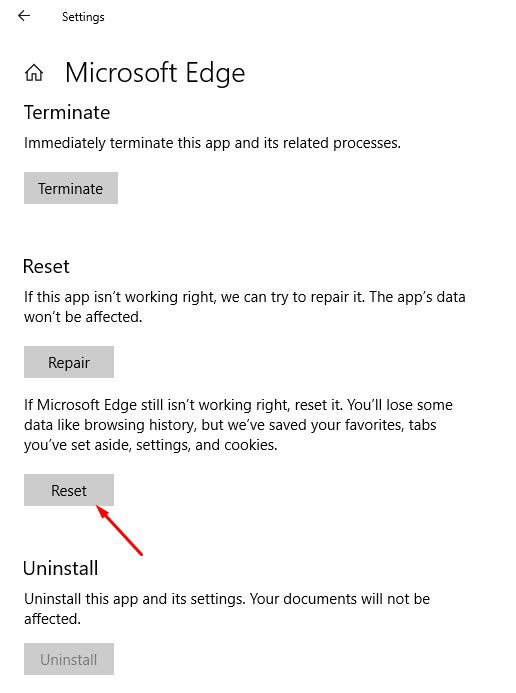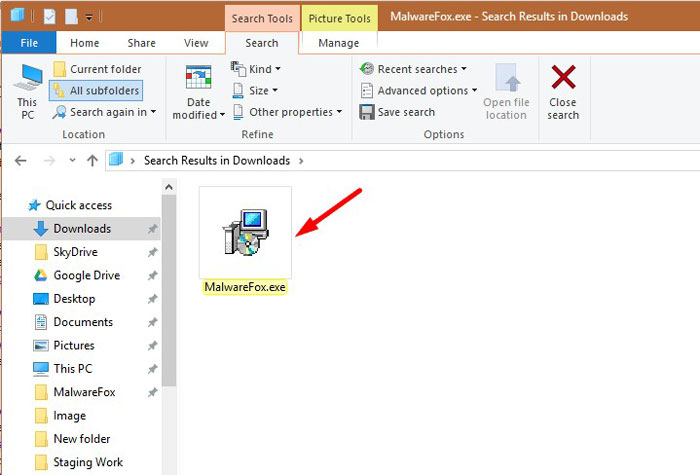ShadowHammer is a backdoor Trojan that quietly infiltrates the system and records data. Its threat actors are distributing in hijacked ASUS software updates, with an emphasis on specific entities using notebook systems. It is spread through emails and targets discord users, which acts as an essential part of the Windows OS process and stops you from deleting or corrupting the critical files on your system. Users unintentionally install it when installing MS Office app like MS Word, MS Excel, MS Presentation, and more. More such malicious programs are – SvcHost.exe, Chapak, Csrss.exe.
ShadowHammer Trojan virus can perform one, more, or all of the following on your system:
- Install other dangerous malware on your systems like Spyware, Ransomware, and others.
- Give remote access of your PC to attackers.
- Malicious pop-ups randomly appear on the browser.
- Use your computer’s power to carry out illicit activities.
- Collect information from your system such as keystrokes, user credentials, etc., store them, and send them to the cybercriminals.
When ShadowHammer Trojan Virus attacks your system, you would sense the following symptoms on your computer:
- High RAM and GPU usage, making the system heat up even without heavy use.
- Application on the system load prolonged because the Trojan is using most of the computing power
- You will find random file and application downloaded automatically on your system
- Internet usage is unnaturally surged up
In this guide, we will walk through the process of removing the ShadowHammer Trojan from the system.
What is ShadowHammer Trojan?
ShadowHammer pretends to be a useful program but in reality, it is a Trojan that can perform a set of malicious activities. It can provide backdoor access to your PC to the hacker or can also exploit the vulnerability of the software. ShadowHammer is a dangerous program that looks legitimate, but in the background, it harms your computer in several ways.
How does ShadowHammer Trojan enter your PC?
ShadowHammer Trojan can use several mediums to enter your PC. In every medium, the user downloads it thinking as genuine software. It could be bundled with the free or pirated software and when you download and install that software the Trojan enters your PC. It can also use a phishing attack to trick you into downloading. Also, it can use social media, the cybercriminals may send you the Trojan from the name of someone you knew and you trust them blindly. ShadowHammer Trojan can also enter using the browser's vulnerability.
Below are some common signs that you have Trojan on your system:
- Slow PC with frequent crashes
- High disk and network usage
- Seeing unexpected errors and pop-ups
- Unusual browser behaviour
- Unknown suspicious programs in your PC.
- Disabled security software
Always opt for the custom/advanced installation mode and deselect anything other than the actual program, especially recommended software that you don't need. In short, you should not install suspicious software. Also, never download pirated software
How to remove ShadowHammer Trojan (Removal Guide)
Please perform all the steps in the correct order. If you have any questions or doubt at any point, comment down and we will try to assist you.
To remove the ShadowHammer Trojan, follow these steps:
- STEP 1: Stop the ShadowHammer Trojan Process
- STEP 2: Clear the Temporary Files
- STEP 3: Uninstall Suspicious Programs
- STEP 4: Reset Browsers to Remove ShadowHammer Infection
- STEP 5: Scan with MalwareFox Antimalware
STEP 1: Stop the ShadowHammer Trojan Process
To remove ShadowHammer Trojan, you should first stop it from running. So that it can’t interfere with the removal process. If the Trojan keeps running it won’t allow you to uninstall the program and may create duplicate processes.
To stop ShadowHammer Trojan, open the task manager. Right-click on the taskbar and choose “Task Manager”.

Now you will see the list of processes. Now find the ShadowHammer process in the process list. Select it and click on “End task”.

Now check the “Startup” tab. If the process is there, select it and click on “Disable”. Now it won’t run again when you restart the PC.
STEP 2: Clear the Temporary Files
Trojan hides in the temporary files so that they can re-infect your PC. So you should clear the temporary files from your system. To that, click on the “Start” menu, and type “Disk Cleanup”. Click on it to open.

Then select the system drive and click “OK”.

Now here, deselect everything and select “Temporary Files” and “Temporary Internet Files”. Then click on “OK”.

Click on “Delete Files” to confirm your action.
STEP 3: Uninstall the Suspicious Program
In this first step, we will be identifying and uninstalling the malicious software from our PC.
-
Go to “Programs and Features”.
Windows 10
- On the Start menu, type Control Panel in the Cortana search box and then select “Control Panel” from the results.
- When the “Control Panel” window opens click on the “Uninstall a program” option under “Programs” category.
Windows 8
Right-click on the Start button and select “Programs and Features”. You will directly reach to the list the of programs installed.- If there is no Programs and Features in the Start menu, then type “programs and features” into the search bar at the bottom of the Start window, then click the “Programs and Features” result.
- If you don’t see the a Start button, you are likely running Windows 8 instead of Windows 8.1. So, press the Windows key + X to open the menu instead and select “Programs and Features”.
Windows 7
- Click on Start, then click on “Control Panel”.
If you don’t see “Control Panel” here, type control panel into the search bar at the bottom of the Start window, then click the “Control Panel” result. - Once you see the “Control Panel”, click on “ Uninstall a Program” from the Programs category.
- On the Start menu, type Control Panel in the Cortana search box and then select “Control Panel” from the results.
-
Find the malicious program and uninstall it.
Now you will see the list of all installed programs in the PC, carefully observe every program and find the unwanted applications, then select it, and click the “Uninstall” button.
Your PC may have different malicious program thus the name may not match. If you cannot find any unwanted malicious programs on your PC, then you can skip to the next step -
Follow the screen instructions to uninstall the program.
In the next screen prompt, click on Yes, and then follow the prompts to uninstall the program.
Read all screen instructions carefully during installation, because malicious programs always try to trick you in hoping that you won’t read properly.
STEP 4: Reset Browsers to Remove ShadowHammer Infection
If you are still seeing ShadowHammer site on your browser, then you need to reset the web browser settings to their defaults. If your issue has been solved by the above methods, then there is no need to follow this step.
Google Chrome
-
Open Chrome’s “Settings” menu.
Click on Chrome’s main menu button, located in top right corner and looks like three vertical dots. Now click on “Settings”.
-
At the bottom, click “Advanced”.
You will see Chrome’s “Settings” in a new tab. Next, scroll down to the bottom and click on the “Advanced” button.
-
Under the section “Reset,” click “Reset”.
Now you will see Chrome’s advanced settings. Scroll down to the “Reset and clean up” section. Then click on the “Reset settings to their original defaults” button.
-
Confirm by clicking “Reset”.
Now you will see a confirmation dialog, detailing the components that will be restored to their default state should you continue on with the reset process. To confirm the reset action, click on the “Reset Settings” button.
Mozilla Firefox
-
Go to the “Help” menu.
Click on Firefox’s main menu button, located in the top right corner, represented by three horizontal lines. Then click on “Help“.
-
Click “Troubleshooting Information”.
Now click on “Troubleshooting Information“.
If you’re unable to access the “Help” menu, then you can type about:support in the address bar and press enter to directly open troubleshooting page. -
Click on “Refresh Firefox”
Now click on the “Refresh Firefox” button which is on the upper-right corner of the “Troubleshooting Information” page.
-
Confirm.
Now you will see the confirmation message telling you the action you are about to take. Click on the “Refresh Firefox” button to confirm the action.
-
Click on “Finish”.
Firefox gets closed and its settings will reset. Then it will display the list with information that was imported. Now click on the “Finish“.
Internet Explorer
-
Go to “Internet Options”.
Open Internet Explorer browser, click on the gear icon in the top right part of the browser, now select “Internet Options“.
-
Go to “Advanced” tab, then click “Reset”
In the “Internet Options”, click on the “Advanced” tab, then select the “Reset” button.
-
Click on “Reset”.
In the “Reset Internet Explorer settings” window, click on the “Delete personal settings” checkbox, then click on the “Reset” button.
-
Click on “Close”.
Once the Internet Explorer completes all the action, click on the “Close” button.
Now you need to restart the Internet Explorer browser.
Microsoft Edge
-
Go to “Apps and Features”.
Right-click on the Start button and select “Apps and Features“. It will open the list of all installed programs.
-
Find Microsoft Edge from the list, then click “Advanced Options”.
You will see the list of all programs in your PC. Scroll through the list and locate “Microsoft Edge”, select it, and then click on the “Advanced options”.
-
Click on “Reset”.
Now you will see the “Advanced Options”. Find the “Reset” section, as shown in the picture below. Then click on the “Reset” button.
STEP 5: Scan with MalwareFox Antimalware
MalwareFox is antimalware that works on heuristic approach to detect and remove malware from your PC. It analyzes the malware signatures as well as their behaviour. If a program acts like a malware then MalwareFox blocks it right there. It is lightweight on your system resource and finishes the scan quickly.
Its not like I am recommending you to install a costly software to remove the malware. The MalwareFox subscription charges are fairly low. But that is for a fully featured program with real-time protection capabilities. The scanning works even with the free version, though you can try the MalwareFox Premium for 14 days. Also, you don't need to remove your current antivirus, MalwareFox will work effectively without any conflicts.
-
Download MalwareFox.
You can download MalwareFox by clicking the link below.
MALWAREFOX DOWNLOAD LINK
(The above link will open a new page from where you can download MalwareFox) -
Double-click on the MalwareFox setup file.
Once the MalwareFox is downloaded, double click on MalwareFox.exe file to install it on your PC. The downloaded files are mostly saved to the Downloads folder.
You will see an User Account Control pop-up asking if you want to allow MalwareFox to make changes to your device. Click on “Yes” to proceed with the installation steps.
-
Follow the on-screen prompts to install MalwareFox.
First MalwareFox installer ask you to choose the language, select your preferend language and click on OK.
Then the MalwareFox installation Wizard appears, click on Next and follow the screen instructions to setup MalwareFox on your PC.
Once the installation is complete, MalwareFox will download the latest version and virus signatures from the server. Let it update.
-
Click on “Scan” Button.
To perform a system scan, click on the “Scan” button.
-
Wait for MalwareFox scan to complete.
MalwareFox is now scanning your computer for adware, pop-ups, browser hijackers, and other malicious programs. This process can take a few minutes, so you can do some other work while it is scanning your PC, don't worry the PC won't get slow during the scan.
-
Click on “Next”.
Once the scan has completed, you will see the list of detected threats on your PC. To remove the malware that MalwareFox has found, click on the “Next” button.
When the malware removal process is complete, you can close MalwareFox and continue with the rest of the instructions.
Your computer should now be clean. If you face any issues while removing ShadowHammer Trojan then please comment down your problem. We will try to help you as much as possible.








